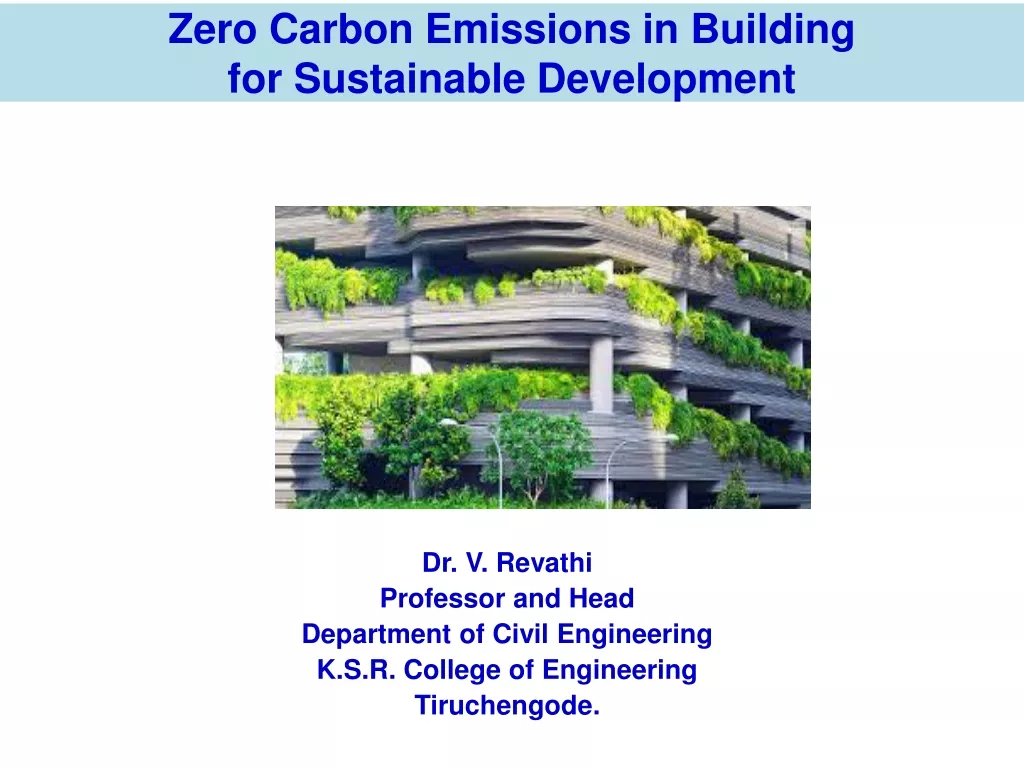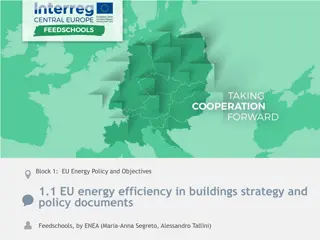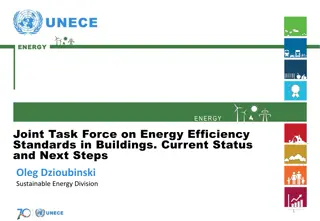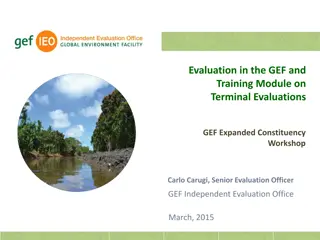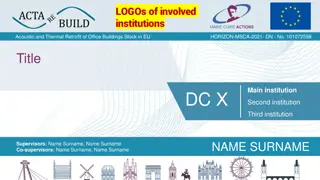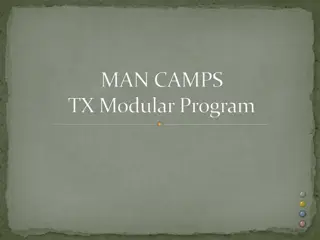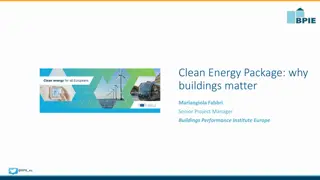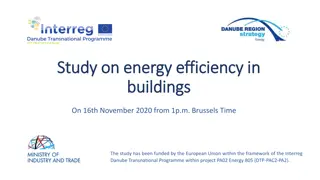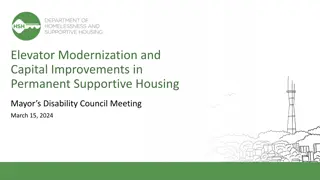Future of DC Power in Buildings: Evaluation and Insights
Assessing the potential of direct current (DC) power in buildings, this study looks at the benefits and challenges, research questions, expert insights, and elicitation protocol used for gathering information from industry leaders. It dives into the reasons for considering DC in buildings, barriers to adoption, key research questions, expert assessments, and the methodology employed in the study.
Download Presentation

Please find below an Image/Link to download the presentation.
The content on the website is provided AS IS for your information and personal use only. It may not be sold, licensed, or shared on other websites without obtaining consent from the author.If you encounter any issues during the download, it is possible that the publisher has removed the file from their server.
You are allowed to download the files provided on this website for personal or commercial use, subject to the condition that they are used lawfully. All files are the property of their respective owners.
The content on the website is provided AS IS for your information and personal use only. It may not be sold, licensed, or shared on other websites without obtaining consent from the author.
E N D
Presentation Transcript
Expert assessments on the future of direct current in buildings Brock Glasgo, Postdoctoral Researcher Engineering and Public Policy Coauthors In s M.L. Azevedo Chris Hendrickson, CEE
2 Why DC in buildings? Semiconductor-based power electronic DC-DC transformers Consistent growth in distributed generation sources that generate DC Growing fraction of DC use in buildings Data centers LED lighting All consumer electronics Variable speed motors Modest energy savings
3 Barriers to adoption Public perceptions Fire and electric shock risk Professionals unfamiliar with DC Uncertain utility interaction Regulatory obstacles Small markets for DC devices Others
4 Research questions Which characteristics of DC circuits most strongly promote and discourage their more widespread use in residential and commercial buildings? How well-founded are the perceived concerns of fire and electric shock safety and how might they affect adoption of DC circuits? How do ongoing trends in electric end use technologies, electric motors, and power electronics affect the long-term viability and costs of DC power distribution in buildings? What are the biggest research needs to better understand this opportunity?
5 Experts Demonstrated expertise with DC power systems Selected from: Industry (5) Research organizations (5) Design, installation, and operation of DC systems (5) Standards (1) University (1) Identified by publications, Emerge Alliance participation, existing DC building projects
6 Elicitation protocol Interviews were done by phone, with experts entering information into an online survey 1. Introduction to expert elicitation, explain the procedure and potential biases 2. Familiarize the experts with a calibration exercise 3. Rank the applications for DC, positive and negative characteristics 4. Define a hypothetical reference building 5. Cost questions, voltage questions 6. Long-term viability and research priorities Survey responses recorded, recorded telephone discussion of open-ended questions transcribed Submitted to and approved by CMU s Institutional Review Board
7 Positive characteristics Energy savings were the most highly cited positive characteristic Many who ranked it highly said that energy savings alone will not drive adoption on a large scale Improved reliability, efficient storage integration, and PV cost savings were all ranked similarly These experts saw DC as enabling a transition to microgrids where local generation, storage, and loads were connected by a DC bus
8 Negative characteristics Lack of developed markets for DC devices and components described as a chicken and egg problem Unfamiliar engineers, electricians, and architects 1. will not recommend or consider DC systems, and 2. will initially charge more for these systems Lack of universally accepted standards 1. Impedes manufacturers 2. Signals to manufacturers and consumers a lack of maturity Shock and fire risk never mentioned
9 System costs All DC, today Hybrid AC/DC, today All DC, 2027 Described a standard commercial office building, and asked to estimate the overnight capital cost to install DC distribution Told to only consider the distribution system itself: panel boards and feeder lines Experts expressed very little confidence in their estimates, but show overall potential to reduce some costs Low voltages allow for untrained installers
10 Long-term viability Main focus so far has been on potential energy savings Experts were not confident that these savings alone are enough to drive adoption Real focus should be on long-term trends which favor DC Increasing attention to resilience Increasing electronic loads Increasing demand for centralized control of end uses Recommended actions Identify niche cases where DC holds a clear advantage over AC and build pilot projects (military, cell towers) Develop training programs for electricians and engineers Continued research into applications and associated technologies
11 Acknowledgements Department of Engineering and Public Policy Center for Climate and Energy Decision Making Phillips and Huang Family Fellowship in Energy
12 Extra slides
13 Research priorities
14 Applications for DC Future applications of DC follow existing deployment DC unlikely in homes and all-DC configurations
15 Voltage standards Asked for the most likely voltage levels and current forms Most common voltages were 24, 48, and 380VDC and 120, 277, and 480VAC Concerns: 24VDC is too low, microgrid PV collection could be 760VDC


